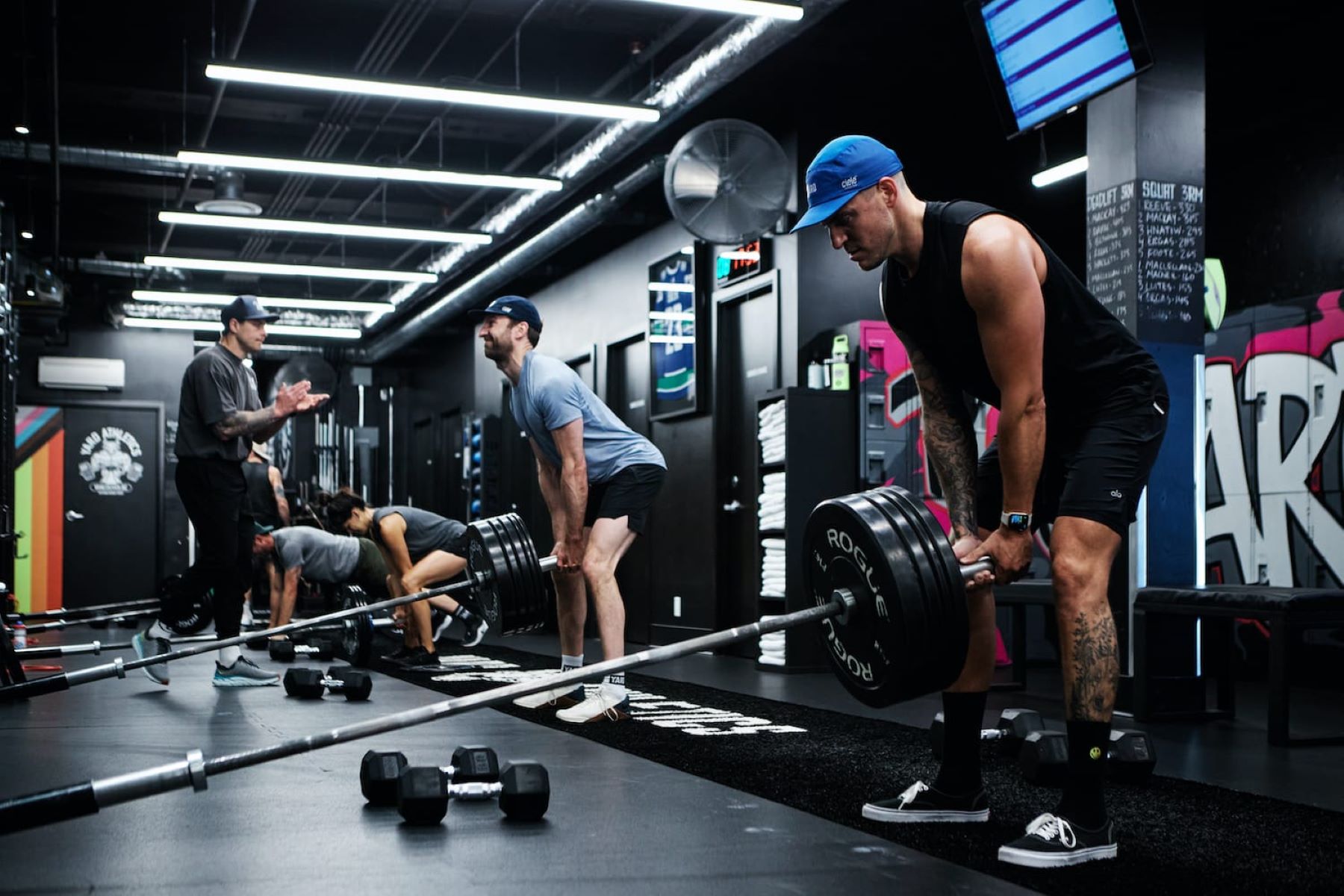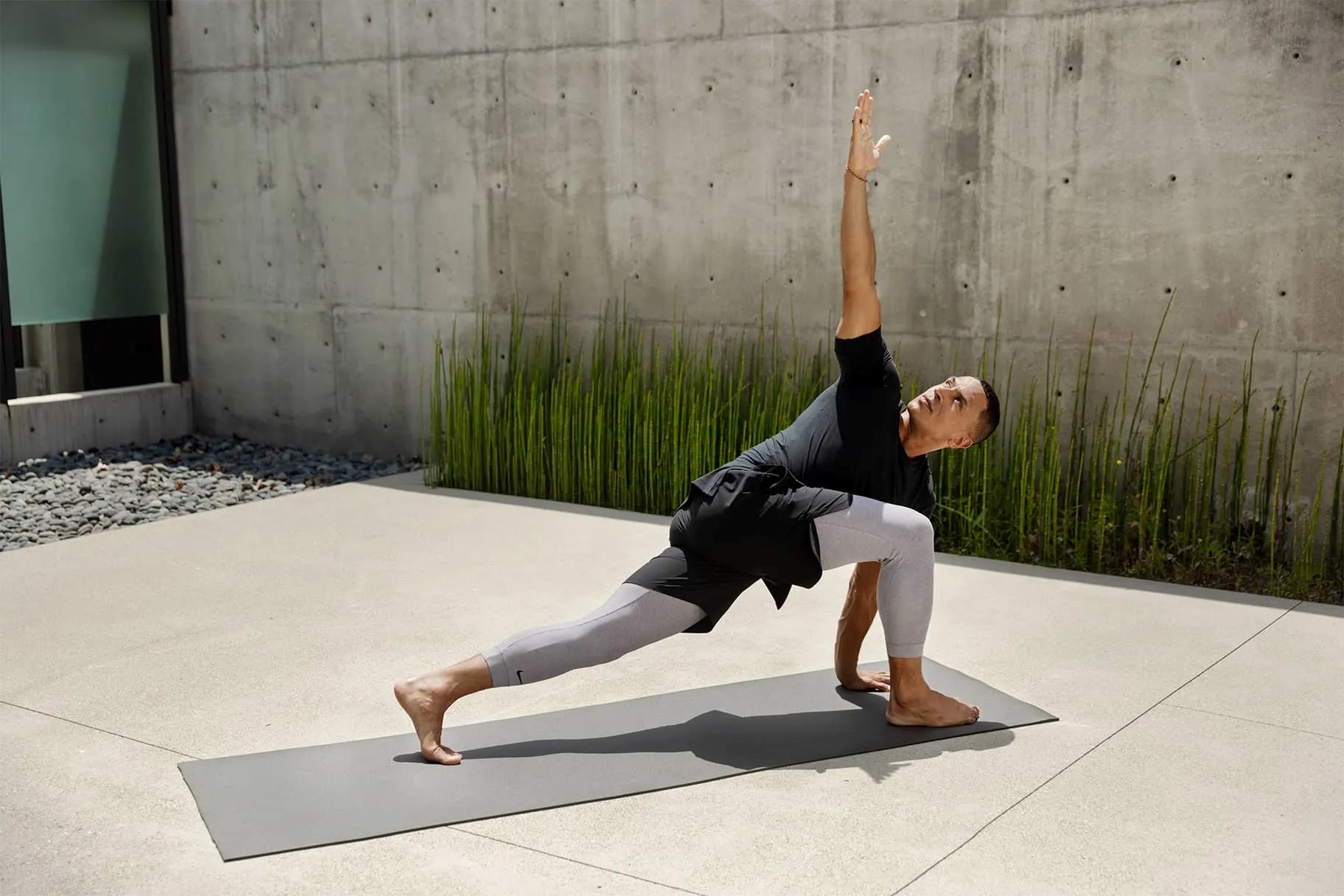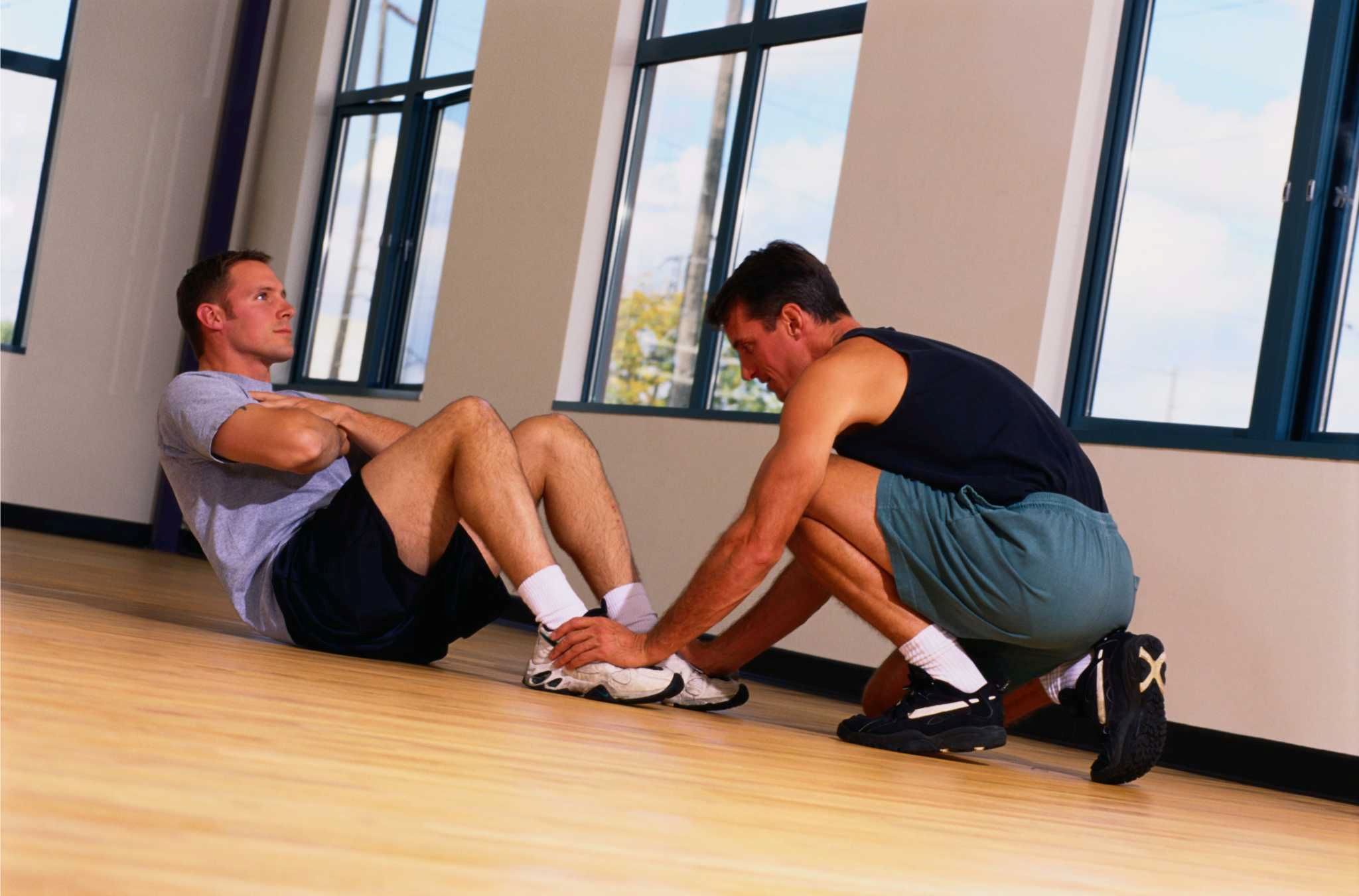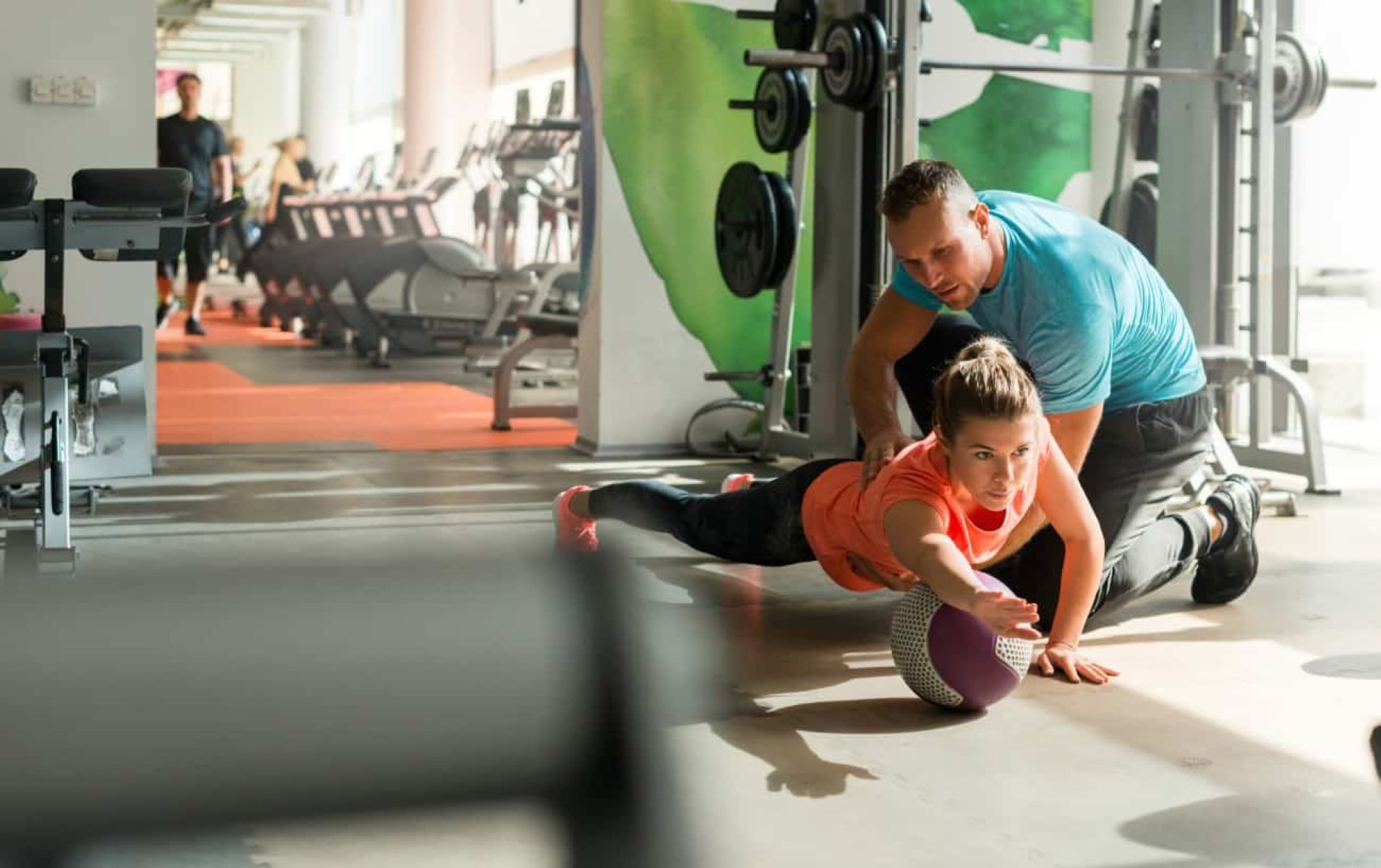

Featured
How To Improve Endurance For Basketball
Modified: March 1, 2024
Featured: Learn how to improve your endurance for basketball with these effective tips and exercises, allowing you to perform at your best throughout the game.
Introduction
Basketball is a fast-paced sport that requires a combination of skill, agility, and endurance. Whether you are playing in a competitive league or just shooting hoops with friends, having good endurance is essential to perform at your best. Endurance not only allows you to sustain your energy level throughout the game but also enables you to recover quickly between plays and maintain a high level of performance.
Improving your endurance for basketball can give you a competitive edge, allowing you to outlast your opponents, make decisive plays in crucial moments, and contribute to your team’s success. In this article, we will explore various strategies and techniques to enhance your endurance specifically tailored for basketball.
Endurance in basketball is not just about running long distances; it is about having the cardiovascular capacity to keep up with the demands of the game. Basketball is a game of constant movement, involving sprinting, cutting, jumping, and change of direction. This requires a different type of endurance than long-distance running or cycling.
The ability to maintain a high intensity of effort for extended periods is what separates the best basketball players from the rest. By improving your endurance, you can increase your playing time, reduce the risk of injuries, and perform at a higher level throughout the entire game.
There are several key factors that contribute to improved endurance for basketball. These include aerobic fitness, strength, nutrition, hydration, mental strategies, and rest and recovery techniques. By addressing these factors and implementing the right training methods, you can take your endurance to the next level and become a more effective and dominant player on the court.
Importance of Endurance in Basketball
Endurance plays a critical role in the game of basketball. It is the foundation that allows players to perform at their best throughout the entire match. Here are some key reasons why endurance is important in basketball:
- Extended Playing Time: Basketball games are intense and can last for extended periods. Players with good endurance can stay on the court for longer periods without getting tired, allowing them to make a greater impact on the game.
- Consistent Performance: Endurance enables players to maintain their skill execution and decision-making abilities even when fatigued. This means they can continue to shoot accurately, make precise passes, and defend effectively throughout the entire game.
- Quick Recovery: Basketball is a dynamic game that requires frequent bursts of energy followed by moments of rest. Good endurance helps players recover quickly during these rest periods, ensuring they can maintain a high level of performance throughout the game.
- Increased Intensity: Endurance allows players to sustain high-intensity efforts for longer durations. This means they can push harder, move faster, and play with greater intensity, giving them an advantage over less-enduring opponents.
- Reduced Risk of Injuries: Fatigue can lead to a decrease in concentration and coordination, increasing the risk of injuries. Good endurance helps reduce fatigue, allowing players to maintain proper form and technique, ultimately lowering the likelihood of injuries.
- Team Contribution: Endurance is particularly crucial in team sports like basketball. When one player has good endurance, they can set the pace for the team, encouraging their teammates to push harder and perform better.
It is evident that endurance is a vital component of basketball performance. By improving your endurance, you not only enhance your personal abilities, but you also positively contribute to your team’s overall success. Now let’s explore how to assess your current endurance level and set goals to improve it.
Assessing Your Current Endurance Level
Before embarking on a journey to improve your endurance for basketball, it is important to assess your current level of fitness. This will provide a baseline from which you can measure your progress and tailor your training program accordingly. Here are some effective methods to assess your endurance:
- Time Trials: One of the simplest and most straightforward ways to assess endurance is through timed trials. Choose a specific distance or duration and record how long it takes you to complete it. This could be running a mile, cycling a certain distance, or performing a cardio exercise for a set time. Repeat the trial periodically and track your progress to see improvements.
- Beep Test: The beep test, also known as the Yo-Yo intermittent recovery test, is a popular assessment tool used to measure endurance. It involves running back and forth between two markers spaced 20 meters apart, following a series of beeps. The beeps get progressively faster, requiring you to increase your speed. The point at which you can no longer keep up with the beeps determines your level of endurance.
- Heart Rate Monitoring: Monitoring your heart rate during exercise can provide valuable insights into your endurance level. By keeping track of your heart rate zones and observing how quickly it returns to normal after exertion, you can gauge your cardiovascular fitness. The quicker your heart rate recovers, the better your endurance.
- Basketball-Specific Drills: While general endurance tests can give you a good overall assessment, it’s also beneficial to evaluate your endurance through basketball-specific drills. Engage in game-like scenarios that mimic the intensity and movements of basketball. Pay attention to how well you maintain your performance level and how fatigue affects your decision-making and execution.
- Rating of Perceived Exertion (RPE): Another method to assess your endurance is by utilizing the rating of perceived exertion scale. This scale allows you to subjectively rate how hard you feel you are working during a workout. By tracking your perceived effort, you can gain insights into your endurance level and make adjustments to your training program as needed.
By assessing your current endurance level with these methods, you can accurately determine your starting point and monitor your progress as you implement training strategies to improve your basketball-specific endurance. Next, let’s discuss the importance of setting goals and how to establish meaningful and achievable targets.
Setting Endurance Goals
Setting goals is an important step in improving your endurance for basketball. It provides direction, motivation, and a benchmark to measure your progress. Here are some key considerations when setting endurance goals:
- Specific and Measurable: Set goals that are specific and measurable. For example, rather than saying “improve endurance,” set a goal of being able to run continuously for 30 minutes without getting winded or being able to complete a certain number of sprints during a game without losing speed.
- Achievable and Realistic: Goals should be challenging yet achievable. Assess your current fitness level and set targets that are within reach. Gradually increase the difficulty as you make progress. Setting unrealistic goals can lead to frustration and disappointment.
- Time-Bound: Establish a timeline for your goals. Set specific deadlines to create a sense of urgency and allow for tracking of progress. This helps to keep you accountable and focused on achieving your endurance targets within a given timeframe.
- Short-Term and Long-Term: Set both short-term and long-term goals. Short-term goals provide immediate targets to strive for, boosting motivation and confidence. Long-term goals give you a broader perspective and something to work towards over a more extended period. This could be achieving a certain endurance level by the end of the basketball season, for instance.
- Adaptable: Keep in mind that goals may need to be adjusted as you progress or encounter unforeseen circumstances. Be flexible and willing to adapt your goals based on your current circumstances and capabilities. This allows for a more realistic and sustainable approach to achieving your endurance targets.
By setting clear and meaningful goals, you can establish a roadmap for your endurance training. This helps to keep you focused and motivated, ultimately increasing the likelihood of making significant improvements in your basketball performance. Now, let’s explore some strategies to enhance your endurance through proper nutrition and hydration.
Proper Nutrition and Hydration
Proper nutrition and hydration are vital aspects of improving endurance for basketball. They provide the fuel and replenishment necessary to support your physical performance. Here are some key considerations for optimizing your nutrition and hydration:
- Stay Hydrated: Hydration is crucial for maintaining optimal performance. Drink water before, during, and after your basketball activities. Dehydration can greatly decrease endurance and impact your overall performance. Aim to drink at least 8-10 cups (64-80 ounces) of water daily, and more on days with intense workouts or games.
- Eat a Balanced Diet: Fuel your body with a balanced diet that includes whole foods from all food groups. Focus on consuming lean proteins, complex carbohydrates, healthy fats, and an abundance of fruits and vegetables. These provide the necessary nutrients to support endurance and aid in recovery.
- Timing of Meals and Snacks: Proper timing of your meals and snacks can optimize energy levels. Eat a balanced meal 2-3 hours before exercise to provide the necessary fuel. If you have less time, opt for a smaller snack that includes carbohydrates and protein. Eating a small snack within 30 minutes after exercise helps replenish glycogen stores and aids in muscle recovery.
- Carbohydrates for Energy: Carbohydrates are the primary source of energy for endurance activities. Include complex carbohydrates, such as whole grains, fruits, and vegetables, in your meals and snacks. They provide sustained energy and help prevent fatigue during basketball games.
- Protein for Recovery: Protein plays a crucial role in muscle repair and recovery. Include lean sources of protein, such as chicken, fish, beans, and tofu, in your meals. Aim for 0.8-1 gram of protein per kilogram of body weight per day to support optimal muscle recovery and growth.
- Avoid Excessive Sugar and Processed Foods: While carbohydrates are important, try to avoid excessive consumption of sugary and processed foods. They can lead to energy crashes and provide little nutritional value. Opt for healthier alternatives that provide sustained energy and essential nutrients.
- Pre-Workout and Post-Workout Nutrition: Before workouts or games, consume a small meal or snack that includes carbohydrates and a moderate amount of protein to provide sustained energy. After exercise, focus on replenishing glycogen stores and aiding muscle recovery by consuming a balanced meal or snack that includes both carbohydrates and protein.
By prioritizing proper nutrition and hydration, you can optimize your energy levels, improve endurance, and support optimal performance on the basketball court. Combined with the right training strategies, a well-balanced diet can make a significant difference in your overall endurance levels. Next, let’s explore how to build aerobic endurance through specific training methods.
Building Aerobic Endurance
Aerobic endurance is a critical component of basketball performance as it provides the foundation for sustained energy throughout the game. By improving your aerobic endurance, you can increase your stamina and perform at a high level for longer periods. Here are some effective strategies to build aerobic endurance:
- Long-Distance Running: Incorporate long-distance running into your training routine. This helps to improve cardiovascular fitness and builds the stamina needed for basketball. Start with shorter distances and gradually increase the duration and intensity of your runs over time.
- Interval Training: Interval training involves alternating periods of high-intensity exercise with periods of low-intensity recovery. For example, you can perform sprints for 30 seconds followed by a 1-minute jog or walk. This helps to improve aerobic capacity and mimic the intermittent nature of basketball.
- Continuous Tempo Runs: Incorporate continuous tempo runs into your training regimen. These are runs performed at a steady and challenging pace, just below your maximum effort. Aim to maintain this pace for an extended duration, gradually increasing the time as you improve your endurance.
- Cross-Training: Engage in cross-training activities that elevate your heart rate and challenge your cardiovascular system. Activities like cycling, swimming, or using an elliptical machine can help build aerobic endurance while providing a break from the repetitive stress of running.
- Circuit Training: Circuit training combines cardiovascular exercises with strength training exercises. This helps build endurance while improving muscular strength and power. Create a circuit using exercises like jumping jacks, burpees, mountain climbers, and squat jumps to challenge both your cardiovascular and muscular systems.
- Basketball-Specific Conditioning: Perform basketball-specific conditioning drills that closely mimic the intensity and movements of the game. Incorporate drills like suicides, shuttle runs, and defensive slides to build basketball-specific endurance and agility.
- Gradual Progression: Gradually increase the intensity and duration of your aerobic workouts over time. This progression allows your body to adapt and become more efficient at utilizing oxygen, improving your overall endurance.
- Consistency: Consistency is key when building aerobic endurance. Aim for regular aerobic workouts, at least 3-4 times per week, to see significant improvements over time. Remember to listen to your body, allowing for adequate rest and recovery.
By incorporating these strategies into your training routine, you can enhance your aerobic endurance and develop the stamina needed to excel on the basketball court. However, building endurance is not solely limited to aerobic training. Next, let’s explore the benefits of high-intensity interval training (HIIT) for improving endurance.
High-Intensity Interval Training (HIIT)
High-Intensity Interval Training (HIIT) is a popular training method that alternates between short bursts of intense exercise and periods of active recovery or rest. Incorporating HIIT into your basketball training routine can greatly improve your endurance and overall performance on the court. Here’s why HIIT is beneficial:
- Efficiency: HIIT workouts are time-efficient, providing maximum benefits in a shorter amount of time compared to traditional steady-state cardio workouts. These intense bursts of exercise followed by recovery periods stimulate the cardiovascular system and improve endurance quicker.
- Aerobic and Anaerobic Conditioning: HIIT workouts challenge both your aerobic and anaerobic energy systems. The high-intensity intervals push your anaerobic threshold, improving your ability to perform high-intensity activities, while the recovery periods allow for aerobic conditioning. This combination is perfect for basketball, which requires both endurance and explosive bursts of energy.
- Fat Burning: HIIT workouts have been shown to boost metabolism and increase fat burning both during and after exercise. This can lead to improved body composition and increased lean muscle mass, which is advantageous for basketball players in terms of performance and agility.
- Variety and Fun: HIIT workouts offer a wide variety of exercises and formats, making them engaging and enjoyable. You can incorporate basketball-specific drills, cardio exercises, strength training, and plyometric movements into your HIIT workouts, keeping your training sessions exciting and challenging.
- Improved Endurance: HIIT improves cardiovascular endurance by increasing your VO2 max (maximum oxygen uptake) and improving your body’s ability to utilize oxygen efficiently. This translates to enhanced endurance during basketball games, allowing you to maintain a high level of performance for longer durations.
- Adaptability: HIIT can be tailored to your fitness level and specific basketball goals. You can modify the duration, intensity, and ratio of work to rest periods to make it suitable for your current endurance level. As you progress, you can increase the intensity or duration to continue challenging yourself and improving your endurance.
- Interval Training Transfers to the Game: HIIT workouts mimic the intermittent nature of basketball, where you alternate between bursts of intense activity and short rest periods. By training in a similar manner, you can improve your ability to recover quickly and perform at a high level during actual games.
To incorporate HIIT into your basketball training routine, design workouts that include exercises like sprints, lateral shuffles, jump squats, burpees, and other plyometric movements. Remember to warm up properly before starting and gradually increase the intensity as your fitness level improves. Including 2-3 HIIT sessions per week can lead to significant improvements in your endurance and performance on the basketball court.
Plyometric Exercises to Improve Endurance
Plyometric exercises are dynamic movements that involve explosive muscle contractions, helping to develop power, speed, and endurance. Incorporating plyometric exercises into your basketball training routine can enhance your overall endurance and athletic performance on the court. Here are some effective plyometric exercises to improve your endurance:
- Jump Squats: Jump squats are an excellent plyometric exercise for developing lower body power and endurance. Start in a squat position, then explosively jump as high as you can. Upon landing, immediately go into the next squat jump. Perform multiple repetitions to challenge your muscles and cardiovascular system.
- Burpees: Burpees are a full-body exercise that targets multiple muscle groups while elevating your heart rate. Begin in a standing position, then squat down and kick your feet back, landing in a push-up position. Make sure to perform a push-up, then quickly return to a squat position and jump explosively into the air. Repeat the movement sequence for a challenging cardiovascular and muscular endurance workout.
- Box Jumps: Box jumps are a great exercise for developing explosive power and endurance in your lower body. Find a sturdy box or platform at a height that challenges you. Jump onto the box, landing softly with your knees bent, then step back down and repeat. As you progress, increase the height of the box or perform the exercise at a faster pace to further improve endurance.
- Skater Jumps: Skater jumps mimic the lateral movements commonly seen in basketball. Begin by standing on one foot and leap sideways to the opposite side, landing softly on the other foot. Repeat this side-to-side motion in a fluid and controlled manner, engaging your leg muscles and core. Perform multiple repetitions for an intense endurance-building workout.
- Bounding: Bounding is a powerful exercise that helps improve lower body strength and endurance. Start with a slight bend in your knees and push off with one leg, propelling yourself forward as far as possible. Land on the opposite leg and immediately repeat the movement on the other side. Focus on covering as much distance as possible with each stride to challenge your endurance.
- Tuck Jumps: Tuck jumps are a challenging plyometric exercise that targets your lower body, core, and cardiovascular system. Start by jumping vertically, driving your knees up toward your chest and extending your arms forward. Land softly and immediately spring back up into the next repetition. Perform as many tuck jumps as you can while maintaining good form and control.
- Depth Jumps: Depth jumps are an advanced plyometric exercise that requires caution and proper technique. Start by standing on a raised platform or box. Step off the box and, as soon as your feet touch the ground, immediately jump vertically or horizontally. This exercise helps develop explosive power and endurance in your leg muscles.
When performing plyometric exercises, ensure that you have a proper warm-up, and listen to your body to avoid overexertion or injury. Start with lower intensity options and gradually progress to more challenging variations as your endurance improves. Including these plyometric exercises in your training routine will help enhance your explosive power, muscular endurance, and overall performance in basketball.
Strength Training for Endurance
Strength training is often associated with building muscle and increasing strength, but it is also an essential component of improving endurance for basketball. By incorporating strength training exercises into your training routine, you can enhance your muscular endurance, improve overall athleticism, and perform at a high level for longer durations on the court. Here are some key considerations for strength training to improve endurance:
- Circuit Training: Circuit training combines strength exercises with minimal rest periods, providing a cardiorespiratory challenge while building muscular endurance. Perform a series of strength exercises back-to-back, targeting different muscle groups. This helps to improve overall endurance and functional strength.
- High Repetitions: To specifically target muscular endurance, choose weights that allow you to perform higher repetitions. Aim for 12-15 repetitions per set, focusing on maintaining proper form and control throughout the exercise. This repetitive effort helps build endurance in the muscles used during basketball movements.
- Compound Exercises: Incorporate compound exercises into your strength training routine. These exercises, such as squats, lunges, deadlifts, and push-ups, engage multiple muscle groups simultaneously. By training these movements, you develop strength and endurance in functional patterns that are relevant to basketball.
- Balance Muscular Imbalances: Identify and address any muscular imbalances that may limit your endurance or increase the risk of injury. Imbalances can occur between opposing muscle groups or between the left and right sides of the body. Focus on exercises that target weaker areas to improve overall balance and stability.
- Core Strengthening: Strengthening your core is essential for maintaining stability, reducing fatigue, and enhancing endurance. Incorporate exercises like planks, Russian twists, and medicine ball rotations to target your core muscles, including the abdominals, obliques, and lower back.
- Functional Movements: Perform strength exercises that simulate basketball movements and improve muscular endurance specific to the sport. This may include lateral lunges, lateral squats, jump squats, medicine ball slams, and resistance band exercises. Focus on movements that mimic the agility, explosive power, and change of direction required in basketball.
- Progressive Overload: Gradually increase the intensity and difficulty of your strength training exercises over time. This can be achieved by increasing the weight, resistance, or number of repetitions. Progressive overload challenges your muscles and forces them to adapt, improving their endurance and overall performance.
- Proper Technique: Maintaining proper technique is crucial during strength training to prevent injuries and maximize the benefits. Ensure that you perform exercises with correct form, focusing on controlled movements and proper muscle engagement. If needed, seek guidance from a qualified strength and conditioning professional.
By incorporating strength training exercises that target endurance into your routine, you can enhance your muscular stamina, improve overall athletic performance, and reduce the risk of injuries associated with fatigue. Combine strength training with other training methods, such as aerobic training and plyometrics, for a well-rounded approach to enhancing your endurance for basketball.
Mental Strategies for Building Endurance
Endurance in basketball is not solely dependent on physical capabilities; it also requires mental strength and resilience. Building mental endurance can help you push through fatigue, maintain focus, and perform at your best for the duration of the game. Here are some effective mental strategies to build endurance:
- Positive Self-Talk: Foster a positive mindset by using self-talk to encourage and motivate yourself during challenging moments. Replace negative thoughts with positive affirmations such as “I can do this,” “Keep pushing,” or “I am strong.” This helps to maintain mental toughness and perseverance.
- Visualize Success: Spend time visualizing yourself performing with endurance and excelling on the basketball court. Imagine yourself running effortlessly, making accurate passes, and having the stamina to play at a high level throughout the game. Visualization helps build confidence and reinforces your belief in your ability to sustain your performance.
- Set Micro-Goals: Break down the game into smaller, achievable goals that help you stay focused and motivated. Rather than solely focusing on the entire game, set goals for specific plays, quarters, or intervals. Celebrating these micro-goals can provide a sense of accomplishment and drive you to continue giving your best effort.
- Practice Mental Toughness: Endurance is not just physical; it’s mental as well. Develop mental toughness through practices such as meditation, mindfulness, or deep breathing exercises. These techniques can help you stay present, manage distractions, and stay focused on the task at hand, even when fatigue sets in.
- Develop a Growth Mindset: Embrace the mindset that endurance is a skill that can be developed and improved with consistent effort and practice. Recognize that setbacks and fatigue are part of the process and view them as opportunities for growth rather than obstacles. Having a growth mindset enables you to approach challenges with resilience and determination.
- Use Imagery Techniques: Engage in mental imagery techniques that help simulate the demands of the game. Imagine yourself facing physical challenges, such as running drills or defending against opponents. By mentally rehearsing these scenarios, you can prepare yourself both physically and mentally for the demands of the game.
- Focus on Breathing: Pay attention to your breathing during intense moments of the game. Take slow, deep breaths to help reduce stress and manage fatigue. Oxygenating your body through proper breathing techniques can help sustain your endurance and improve overall performance.
- Stay Present: Focus on the present moment and avoid getting overwhelmed by the length of the game or thoughts of fatigue. Concentrate on the current play, making the best decisions and giving your full effort. Breaking the game down into smaller segments can make it more manageable and prevent mental fatigue.
By incorporating these mental strategies into your basketball routine, you can build mental endurance and resilience. Remember that endurance is not only physical but also a mental game. Developing mental toughness and employing these strategies can help you push through fatigue, maintain focus, and perform at your best, not just for a few minutes but throughout the entire game.
Rest and Recovery Techniques
Rest and recovery are essential components of building endurance for basketball. Properly allocating time for rest and implementing effective recovery techniques allows your body to repair and rebuild, leading to improved endurance and overall performance. Here are some rest and recovery techniques to incorporate into your training routine:
- Prioritize Sleep: Quality sleep is crucial for optimal recovery. Aim for 7-9 hours of uninterrupted sleep each night. Sleep plays a critical role in muscle repair, hormone regulation, and cognitive function, all of which contribute to improved endurance and performance.
- Active Recovery: Engage in active recovery activities such as light stretching, yoga, or low-intensity exercises to promote blood flow, reduce muscle soreness, and aid in recovery. These gentle movements help flush out metabolic waste and increase flexibility and range of motion.
- Massage or Foam Rolling: Utilize massage or foam rolling techniques to release muscle tension, increase circulation, and reduce muscle soreness. These techniques help alleviate tightness, break up adhesions, and promote faster recovery, allowing you to maintain optimal performance.
- Nutrition for Recovery: Proper nutrition is essential for effective recovery. Include a balanced meal or snack that includes a combination of carbohydrates and protein within 30-60 minutes after exercise. This helps replenish glycogen stores, repair muscle tissue, and enhance recovery.
- Hydration: Hydration is critical for recovery. Drink plenty of water throughout the day to maintain optimal hydration levels. Dehydration can impair recovery and lead to increased muscle soreness and fatigue. Consider adding electrolytes to your water or consuming sports drinks for added replenishment.
- Periodization: Incorporate planned periods of rest and recovery into your training program. Periodization involves strategically reducing training volume and intensity to allow your body to adapt and recover. This helps improve overall endurance and prevents overtraining and injuries.
- Listen to Your Body: Pay attention to any signs of overtraining, fatigue, or excessive soreness. It’s important to listen to your body and take rest days or modify your intensity as needed. Pushing through extreme fatigue can increase the risk of injuries and hinder progress.
- Mental Rest: In addition to physical rest, prioritize mental rest as well. Engage in activities that you enjoy and that help you relax, such as reading, spending time with loved ones, or engaging in hobbies. Mental rest promotes overall well-being and aids in recovery.
- Consistency with Training: While rest and recovery are crucial, it’s also important to maintain consistency with your training. Regular, structured workouts allow for progressive overload and continued improvement in endurance. Find the balance between training and rest to optimize performance.
Remember, allowing your body to rest and recover is just as important as the training itself. By implementing these rest and recovery techniques, you can optimize endurance gains, reduce the risk of overuse injuries, and perform at your best on the basketball court.
Conclusion
Improving endurance in basketball is crucial for maintaining a high level of performance throughout the entire game. It requires a combination of physical and mental strategies, along with proper rest and recovery. By implementing the strategies mentioned in this article, you can enhance your endurance, increase your playing time, reduce fatigue, and contribute to your team’s success.
Start by assessing your current endurance level and setting specific and measurable goals. Incorporate proper nutrition and hydration to fuel your body and support optimal performance. Implement aerobic training, such as long-distance running and interval training, to improve cardiovascular fitness. Include plyometric exercises and strength training to enhance muscular endurance and power. Develop mental strategies, such as positive self-talk and visualization, to build mental toughness and resilience. Lastly, prioritize rest and recovery techniques such as quality sleep, active recovery, and proper nutrition to allow for muscle repair and growth.
Remember, the journey to improving endurance is not a one-time effort but a continuous process. Consistency is key. Stay committed to your training and continuously challenge yourself to achieve higher levels of endurance. Every step forward, no matter how small, brings you closer to becoming a more dominant and enduring player on the basketball court.









